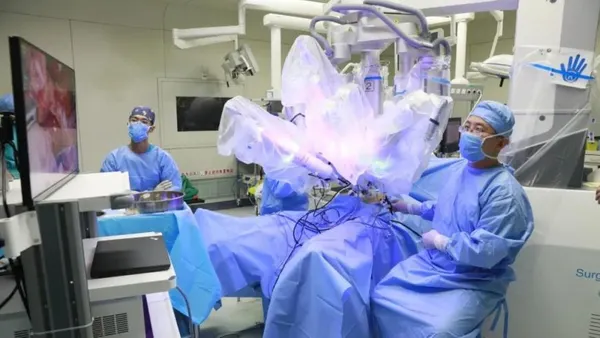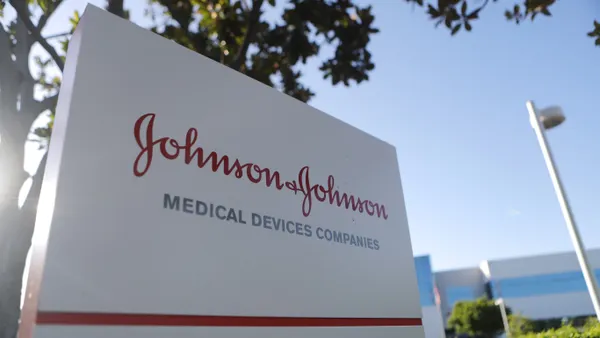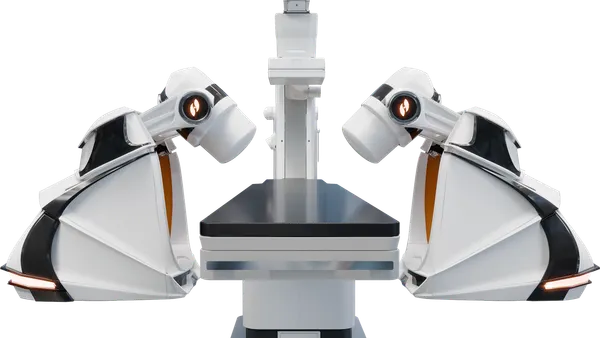Dive Brief:
- An FDA advisory panel voted against BD's Lutonix drug-coated balloon for treating peripheral artery disease below the knee, a second setback for the device in roughly 18 months and signaling a likely rejection for a premarket approval.
- During a Wednesday meeting, the FDA's Circulatory System Devices Panel voted on three criteria: whether the device was safe for the indication, whether it was clinically effective, and whether the benefits of using the device outweighed the risks. While the majority of panelists voted that the device was safe, the panel largely voted against the latter two criteria.
- Wall Street analysts were not surprised by the outcome as the FDA's documents released ahead of the meeting raise multiple questions regarding BD's trial data. J.P. Morgan analysts wrote that the company's 2021 financial results would not be impacted if the PMA is ultimately rejected because any potential sales for indication expansion were "left as upside to Street models."
Dive Insight:
BD requested the panel review for the Lutonix device after the FDA notified the company in 2019 that its application was not approvable. The company said at the time that they were working with the FDA to provide additional trial data.
However, the agency and the panel were not convinced once the data was presented.
Numerous panelists and the FDA raised concerns about large amounts of missing data for both the trial and control groups due to patient deaths, withdrawn consent or lack of follow-up, which made analysis imprecise. And panelists questioned the effectiveness of treatment because the data showed any benefits for patients at six months deteriorated at 12 months and then further deteriorated at later check-in points, suggesting traditional treatment is better beyond a six-month period.
Another issue raised was that the physicians were not blind to which treatment types the patients were given, creating a situation where a physician's bias might impact how the effectiveness of treatment is judged.
Multiple clinicians, who pre-recorded videos to submit during the public comment section of the review, spoke about the benefits of the device and advocated for having the treatment as an option. A few panelists suggested that this actually worked against BD as enthusiasm for the treatment showed the necessity for physicians to be blind in the trial.
The FDA raised issues with the trial itself, which began in 2013. For example, the trial was cut short in 2018 after low enrollment rates, and BD moved the primary endpoint for treatment efficacy in patients from 12 months to six months, among other changes while the trial was ongoing.
The company did not return a request for comment at the time of publication.
BD's trial compared the drug-coated balloon administered to percutaneous transluminal angioplasty, which is also a balloon treatment but without a drug coating.
The safety of paclitaxel devices has been under recent scrutiny by the FDA. The agency convened a two-day panel in June 2019 after a study found a connection between long-term mortality risks associated with paclitaxel- coated balloons and paclitaxel-eluting stents. Panelists concluded that while devices should remain on the market, new labeling warning of the safety concerns should be added.
Nonetheless, the safety of the Lutonix device was not a primary issue as 15 panelists voted it was safe and two voted against, with one panelist abstaining. There was a similar split against clinical effectiveness and against the benefits outweighing the risks.
Multiple panelists expressed disappointment that the trial did not show clinical benefit as the patient population the devices would treat is complex and another treatment option would be a positive for patients and doctors.
Expert panel votes are not the final decision for the FDA, but the agency typically follows panels' advice.
Stifel analysts wrote that it is unclear how the panel's decision would impact other medtechs like Boston Scientific, Medtronic and Abbott Laboratories that also manufacture drug-coated balloons.
"For BSX, MDT and ABT we don’t come away incrementally negative about this potential future opportunity, as these companies clearly have different products," the analysts wrote. " It was clear from today’s physician panel discussion that panelist consternation ... largely centered on trial design and execution, leading to sub-optimally clear conclusions about the data."
The analysts added that there may still be an opportunity for drug-coated treatment below the knee for patients with critical limb ischemia, which could be a growing market. Stifel projects that the U.S. market of below-the-knee treatments for patients with critical limb ischemia now at hundreds of millions of dollars, with the potential to top $1 billion.










